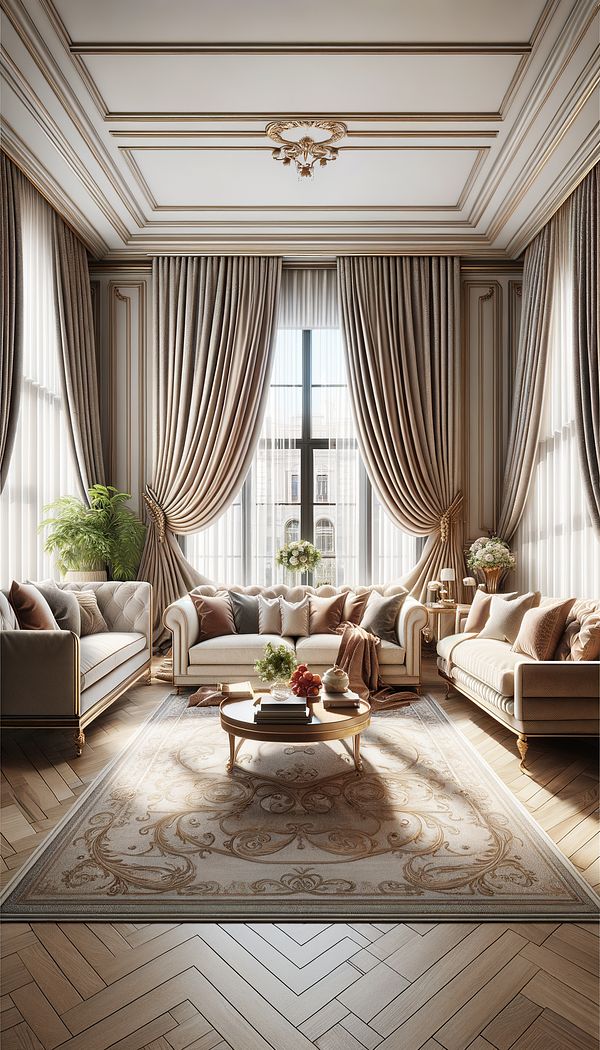What is Window Treatment?
Window treatment refers to the decoration and functionality added to windows.
Description
Window treatment encompasses a wide variety of materials and devices used for covering windows. The term includes both functional and aesthetic elements, ranging from simple window shades and curtains to intricate drapery and blinds. Functionally, window treatments can provide privacy, control over natural light intake, and contribute to the thermal insulation of a space. Aesthetically, they play a significant role in the interior design of a room, adding color, texture, and style.
Window treatments can be categorized into two main types: hard and soft. Hard treatments refer to those made of hard materials, such as wood, metal, or plastic, including shades, blinds, and shutters. Soft treatments, on the other hand, are made of soft materials like fabric, encompassing items such as curtains, drapes, and sheers. Each type offers different benefits and visual effects, allowing for a wide range of customization to match any interior design style.
Choosing the right window treatments can transform the appearance and feel of a room. They can accentuate or complement the overall design theme, influence the perception of space, and even become focal points of a room. Additionally, with advancements in technology, many window treatments now offer enhanced functionality, such as motorized blinds or smart shades, which can be controlled remotely for added convenience.
Usage
In a modern living room, motorized roller blinds could offer both privacy and ease of use, integrating seamlessly into a minimalist design. Alternatively, in a classic Victorian dining room, sumptuous velvet drapes can add a touch of elegance and drama, while also improving the room's acoustics.
FAQs
-
What is the difference between blinds and shades?
Blinds are window treatments made with slats that can be tilted to control light and privacy, while shades are made of a continuous piece of material that can be rolled or folded up and down.
-
Can window treatments improve energy efficiency?
Yes, certain window treatments like thermal drapes or cellular shades can add a layer of insulation, helping to maintain indoor temperatures and reduce energy costs.
-
Are there smart window treatments available?
Yes, advancements in technology have led to the development of smart window treatments that can be controlled remotely via a smartphone or integration with home automation systems.
Practical Application
When selecting window treatments, consider both the functional needs and the desired aesthetic for the space. Measure windows accurately and explore different materials and styles to find the perfect match. Consider integrating smart window treatments for added convenience and control.
-
Decorative Techniques322 articles
-
Window Treatments65 articles
-
Materials & Textiles360 articles
-
Color & Patterns154 articles
-
Textiles & Upholstery252 articles
-
FiligreeFiligree refers to delicate and intricate ornamental work made from fine twisted wires, usually of gold or silver, used in jewelry, metalwork, and interior design elements.
-
QuatrefoilA quatrefoil is a decorative element consisting of a symmetrical shape which forms the overall outline of four partially overlapping circles of the same diameter.
-
Pattern RepeatPattern repeat is the distance between one point in a design to the exact point where it starts again.
-
LuminanceLuminance is the intensity of light emitted from a surface per unit area.
-
American ColonialAmerican Colonial is a design style that reflects the architectural and interior designs prevalent during the colonial period in America.
